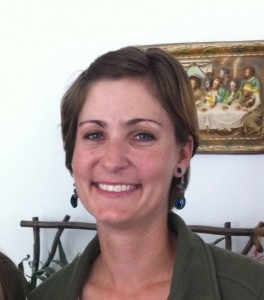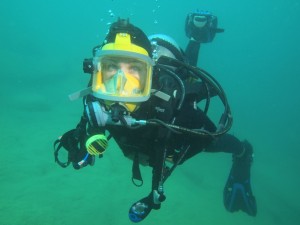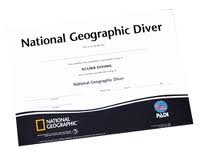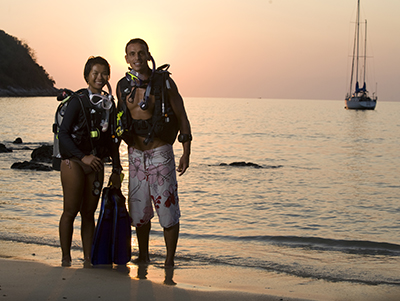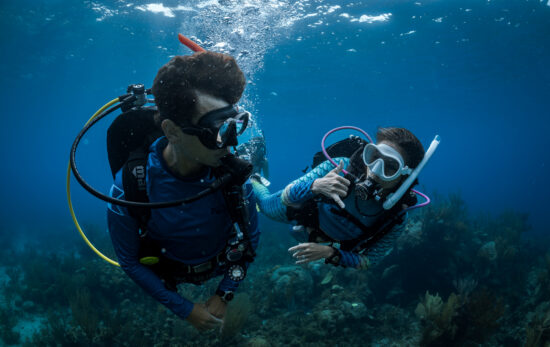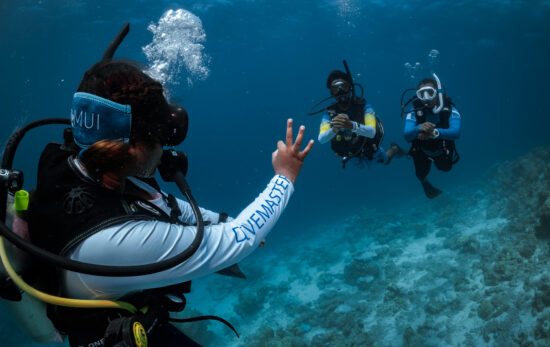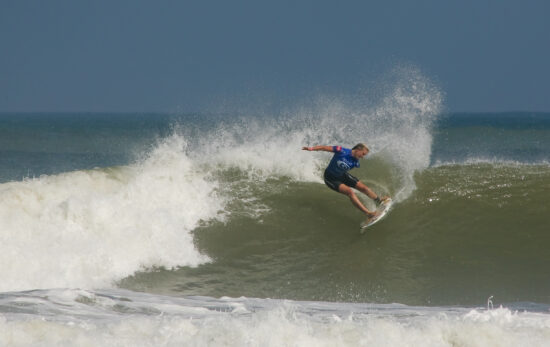Confession time: the author of this post had to look up limnologist in google. As it turns out, a limnologist does important work for their local community, and it’s a lesser-known but interesting job for divers. Read on to learn more about PADI Instructor and limnologist Kelly Wucherpfennig.
Kelly Wucherpfennig first took the plunge after her sister, a PADI Master Scuba Diver, shared her enthusiasm for diving. Wucherpfennig soon worked her way through the diver ranks and eventually became a PADI Instructor.
At this point, scuba diving was a hobby while she worked full time as a scientist. Wucherpfennig’s previous jobs included testing things such as pet food and she later worked for Miller/Coors testing beers. With a degree in Chemistry/BioChemistry and a passion for diving, she sought out a job that could marry her educational background with scuba diving. An opening for a limnologist in Southern California fit the bill.
Wucherpfennig explains: “A limnologist is someone who studies inland waters, including lakes, rivers, ponds, streams, etc. Most of the drinking water in Southern California is brought in from hundreds of miles away and stored in our fresh water reservoirs, or lakes, before it is treated and served to us to drink. We take water samples and use our diving observations in these lakes to ensure good water quality so that after the water is treated, it meets drinking water standards and tastes good.”
She describes an average work day: “There are a couple of typical days in the life for me. One would be spent out on one of the lakes collecting water samples and electronic profile information for water quality analysis back at the laboratory. Much of what we do can be done from the surface, but observations underwater are also useful in understanding what is going on in the lake.
“So the other typical day is spent diving in one of the lakes or smaller reservoirs, inspecting for benthic algae, filamentous algae bundles, quagga mussels, and macrophyte growth, all of which could potentially cause issues from water quality, taste and odor of the water, and blocking the flow of water. But at a moments notice, all plans can change when something comes up that needs attention. This could be a diving request, a ROV (remote operated vehicle) inspection request, a tunnel inspection when the aqueduct is shut down, or just to check out an algae bloom on one of the lakes.”
For scuba diving scientists who aspire to a job like this, Wucherpfennig recommends a Rescue Diver certification at minimum and diversified specialty certifications and experience including: Peak Performance Buoyancy, Dry Suit, Full Face Mask (offered as a PADI Distinctive Specialty) and Underwater Photography.
“We dive in dry suits during the winter, and wetsuits during the summer. We also use full face masks with communications to talk with the surface support and our dive buddy under water. Underwater photography is a good skill to have as I take photos on nearly every dive I do. Buoyancy is a key skill so the bottom doesn’t get stirred up while collecting algae samples or making observations. Deep diving and navigation are also useful skills.
“Essentially, you need to get to the point where you’re super comfortable under water so that you can do the work and not focus on how to dive. As for personal characteristics, just loving to be outdoors and doing athletic activities. I spend a lot of time outside, in all kinds of weather, and much of what I do is physical so being in good shape is necessary.”
For divers with a scientific educational background interested in a job like this, Wucerpfennig advises researching the opportunities and knowing what experience is required so that when a job comes available, you’re ready and qualified for it. She adds, “I knew about my job four years before it became available. I spent that four years researching what I needed to know and gathering the required experience so that I was ready when it became available. The worst thing you could do is not have the experience necessary when the opportunity arises.”
Though she hopes to dive with a whale shark one day, Kelly Wucherpfennig still sites Southern California as her favorite place to dive, “The kelp forests are amazing and nothing else that I’ve seen under water comes close to them!”
What’s your dream career?
Contact a PADI Dive Center near you and ask about becoming a PADI Professional.
You can also read more about what it takes to become a scuba instructor.
Interested in diving for a living but not as a scuba instructor?
Read about other scuba diving jobs open to you as a PADI Professional.

